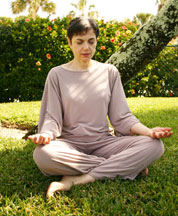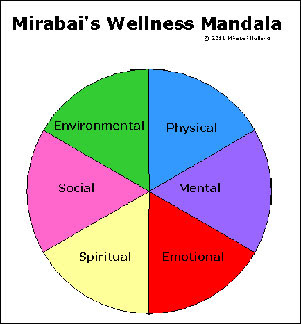
Test your fitness and wellness I.Q. today. It can greatly increase your longevity. If you haven’t been physically active or done regular exercise for a while, it may be hard to know what to do.
Fitness And Wellness Self-Quiz
(answers at end)
1. What is the number one killer disease of women?
a. Osteoporosis
b. Breast Cancer
c. Heart Disease
d. Diabetes
2. What does osteopenia mean?
a. Low muscle mass
b. Low bone mass
c. Another word for osteoporosis
d. Strong bones
3. What is the normal % of body fat?
a. 15-20%
b. 22-30%
c. 25-35%
d. 30-35%
4. Which one of the following blood pressure readings is considered a risk factor for heart disease?
a. 110/70
b. 115/80
c. 120/80
d. 140/90
5.What helps to pick up metabolism?
a. Lean muscle mass
b. 1000 calorie a day diet
c. Sleeping 8 hours a night
d. Meditation
6. How much body fat does the average 65 year old woman have?
a. 30%
b. 37%
c. 43%
d. 50%
7. What is sarcopenia?
a. high muscle mass
b. low bone mass
c. high bone mass
d. low muscle mass
8. What is interval training best for:
a. Picking up the metabolic rate
b. Adding variety to your routine
c. Making it easy to get a drink of water
d. Both a & b
9. An optimal program for older people would include activities to improve:
a. strength, flexibility and coordination
b. eyesight
c. digestion
d. jogging
10. What body shape is the one that puts you at less risk for both heart disease and breast cancer?
a. apple
b. pear
c. banana
d. pineapple
11. To be at less risk for heart disease your total cholesterol should be:
a. Above 200
b. Below 200
c. Between 200-220
d. Between 220-225
12. Which is the “good” cholesterol
a. HDL
b. LDL
c. NDL
d. Margarine
13. How much exercise should you do?
a. At least 3-4 times a week, 30 minutes at 60-90% max heart rate.
b. At least twice a week, 60 minutes at 70-90% max heart rate
c. At least once a week, 60 minutes at 80-85% max heart rate
d. At least twice a week, 30 minutes at 70-90% max heart rate
14. What is the equation of finding your target heart rate?
a. 220-age x %
b. 200-age x %
c. 220 x age – %
d. 200 x age – %
15. What does aerobic exercise do?
a. Helps to stimulate metabolism and reduce LDL
b. Helps to develop stronger abdominals and back muscles
c. Helps to build a stronger heart muscle
d. a & c
16. What are the risk factors for heart disease that you can control:
a. Family history, age, menopause
b. Inactivity, excessive alcohol, and high blood pressure
c. Smoking, high cholesterol and triglycerides
d. b & c
17. How often should you weight train?
a. Every day
b. 3 days in a row, 2 days rest
c. 2-3 times a week, alternating days
d. None of the above.
18. How often should you perform a Breast Self-Examination?
a. every other week
b. Once a month (if still menstruating best time a week after the start of your period)
c. Once every week
d. None of the above.
19. When should you start getting annual mammograms?
a. After age 40
b. After age 45
c. After age 50
d. After age 55
20. What are the best types of exercise if you have had breast cancer?
a. Light strengthening and stretching exercises.
b. Walking and swimming.
c. High intensity strength training
d. a & b
21. 44 million Americans at risk for Osteoporosis; what % are women?
a. 60%
b. 70%
c. 80%
d. 90%
22. By the time women are 70 they can lose up to
a.15% bone mass
b. 20% bone mass
c. 30 % bone mass
d. 45% bone mass
23. As a woman goes through menopause what is the main factor that causes bone loss?
a. loss of estrogen
b. fatigue
c. hot flashes
d. lightheadedness
24.What are the 3 areas at most risk for osteoporotic fracture?
a. Spine, neck, foot
b. Hip, shoulder, foot
c. Spine, hip, wrist
d. None of the above.
25. What type of exercise is not particularly effective for loading your bones
a. Weight training
b. Walking
c. Swimming
d. Jogging
ANSWERS: 1. c, 2. b, 3. b, 4. d, 5. a, 6. c, 7. d, 8. d, 9. a, 10. a,11. b, 12. a, 13. a, 14. a, 15. d, 16. d, 17. c, 18. b, 19. a, 20. d, 21. c, 22. c, 23. a, 24. c, 25. c
 By the time we reach our 50s and 60s, we have often learned habitual postures and positions that block our ability to breathe fully. These postures might be learned from parents, they might be developed from past injuries or result unconsciously from daily environments like driving or hunching forward to look at a computer.
By the time we reach our 50s and 60s, we have often learned habitual postures and positions that block our ability to breathe fully. These postures might be learned from parents, they might be developed from past injuries or result unconsciously from daily environments like driving or hunching forward to look at a computer.













